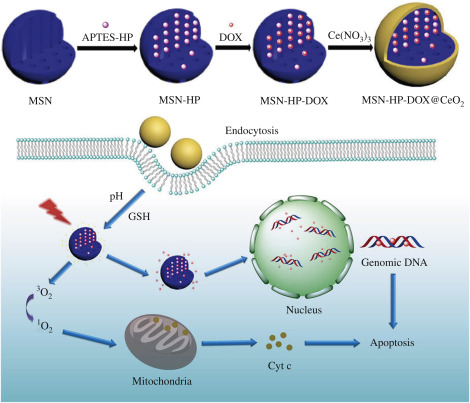
Cadmium Sulfide Nanoparticles: Properties, Synthesis, and Applications
Cadmium sulfide (CdS) nanoparticles are an important class of semiconductor materials known for their unique optical and electronic properties. With applications spanning electronics, photonics, and environmental science, CdS nanoparticles are paving the way for innovation in advanced materials. This article delves into their properties, synthesis methods, and diverse applications.
Properties of Cadmium Sulfide Nanoparticles
- Semiconductor Behavior:
- CdS is a direct bandgap semiconductor with a bandgap energy of approximately 2.4 eV, making it suitable for optoelectronic applications.
- Quantum Size Effects:
- At the nanoscale, CdS exhibits quantum confinement, leading to tunable optical properties based on particle size.
- Photoluminescence:
- CdS nanoparticles exhibit strong photoluminescence, making them ideal for applications in light-emitting devices and bioimaging.
- Thermal and Chemical Stability:
- High stability under a variety of conditions enhances their usability in diverse applications.
- High Surface Area:
- The nanoscale size provides a large surface area, enhancing reactivity and efficiency in catalytic applications.
Synthesis Methods
- Chemical Precipitation:
- A simple and cost-effective method involving the reaction of cadmium salts with sulfide ions in aqueous or non-aqueous solutions.
- Sol-Gel Process:
- Produces highly uniform nanoparticles with controlled properties through a solution-phase reaction followed by gelation and drying.
- Hydrothermal Synthesis:
- Utilizes high pressure and temperature to produce well-crystallized CdS nanoparticles with tailored properties.
- Microwave-Assisted Synthesis:
- Accelerates the reaction process using microwave radiation, yielding nanoparticles with uniform size and morphology.
- Green Synthesis:
- Employs eco-friendly methods using plant extracts or microorganisms as reducing agents to produce CdS nanoparticles.
Applications of Cadmium Sulfide Nanoparticles
- Solar Cells:
- Used as a key material in thin-film solar cells and quantum dot-sensitized solar cells for efficient energy conversion.
- Light-Emitting Devices:
- Incorporated into LEDs and display technologies due to their strong photoluminescence.
- Photocatalysis:
- Facilitates photocatalytic degradation of pollutants and water splitting for hydrogen production.
- Bioimaging and Biosensors:
- Acts as a fluorescent marker in biomedical imaging and as a sensitive component in biosensors.
- Optoelectronics:
- Integrated into photodetectors and other optoelectronic devices for enhanced performance.
- Environmental Applications:
- Used in sensors and catalysts for monitoring and mitigating environmental pollutants.
Advantages of CdS Nanoparticles
- Tunability:
- Optical and electronic properties can be precisely controlled by adjusting particle size and synthesis conditions.
- High Efficiency:
- Exhibits excellent performance in light absorption and emission, enhancing device functionality.
- Versatility:
- Applicable in a wide range of industries, from energy to healthcare.
Challenges in Using Cadmium Sulfide Nanoparticles
- Toxicity:
- Cadmium is a toxic element, requiring careful handling and disposal to minimize environmental and health risks.
- Stability:
- Long-term stability under operational conditions needs improvement for certain applications.
- Cost of Production:
- High-purity synthesis methods can be expensive, impacting scalability.
- Environmental Impact:
- Developing sustainable and green synthesis methods is critical to reducing ecological footprints.
Future Directions
- Eco-Friendly Synthesis:
- Advancing green synthesis methods to minimize environmental and health concerns.
- Hybrid Materials:
- Combining CdS nanoparticles with other nanomaterials to create multifunctional composites for advanced applications.
- Energy Applications:
- Expanding their role in renewable energy systems, including solar cells and hydrogen production.
- Biomedical Innovations:
- Enhancing their use in targeted drug delivery, bioimaging, and biosensing.
- Advanced Photonics:
- Developing next-generation photonic devices leveraging the unique optical properties of CdS nanoparticles.
Conclusion
Cadmium sulfide nanoparticles are a versatile and impactful material with potential to revolutionize various industries. Their exceptional optical, electronic, and catalytic properties make them indispensable in energy, healthcare, and environmental applications. As research continues to address challenges such as toxicity and scalability, CdS nanoparticles are set to play a pivotal role in advancing nanotechnology and sustainable solutions.
